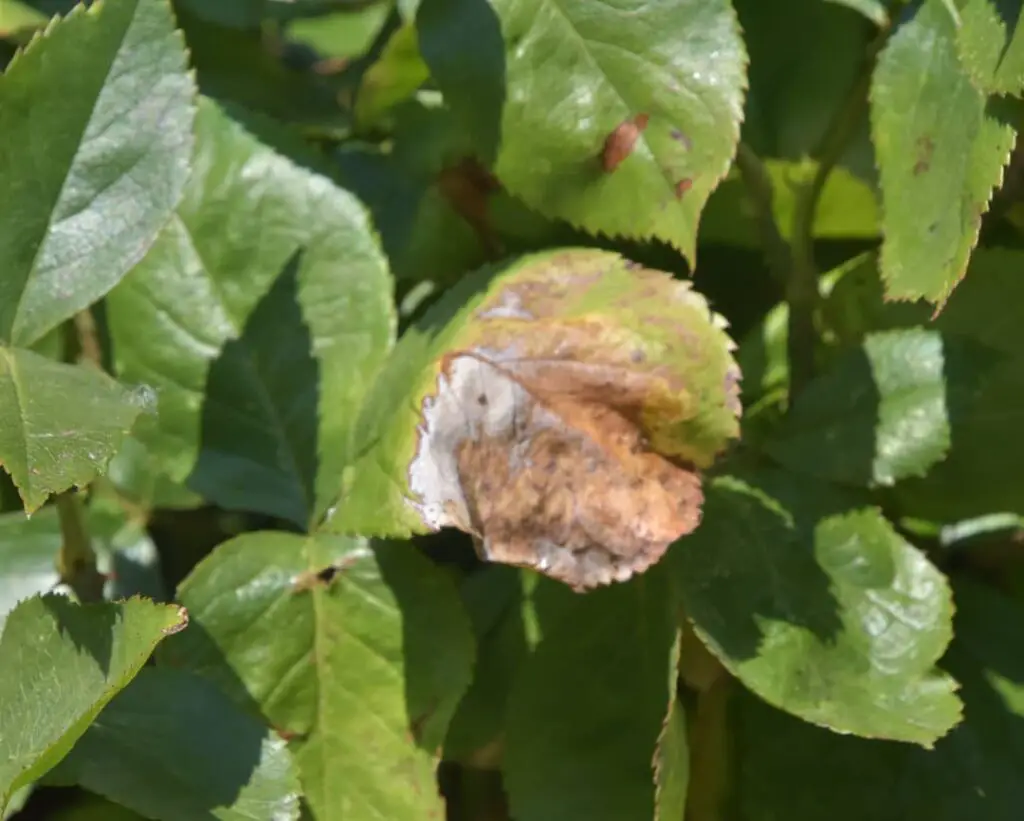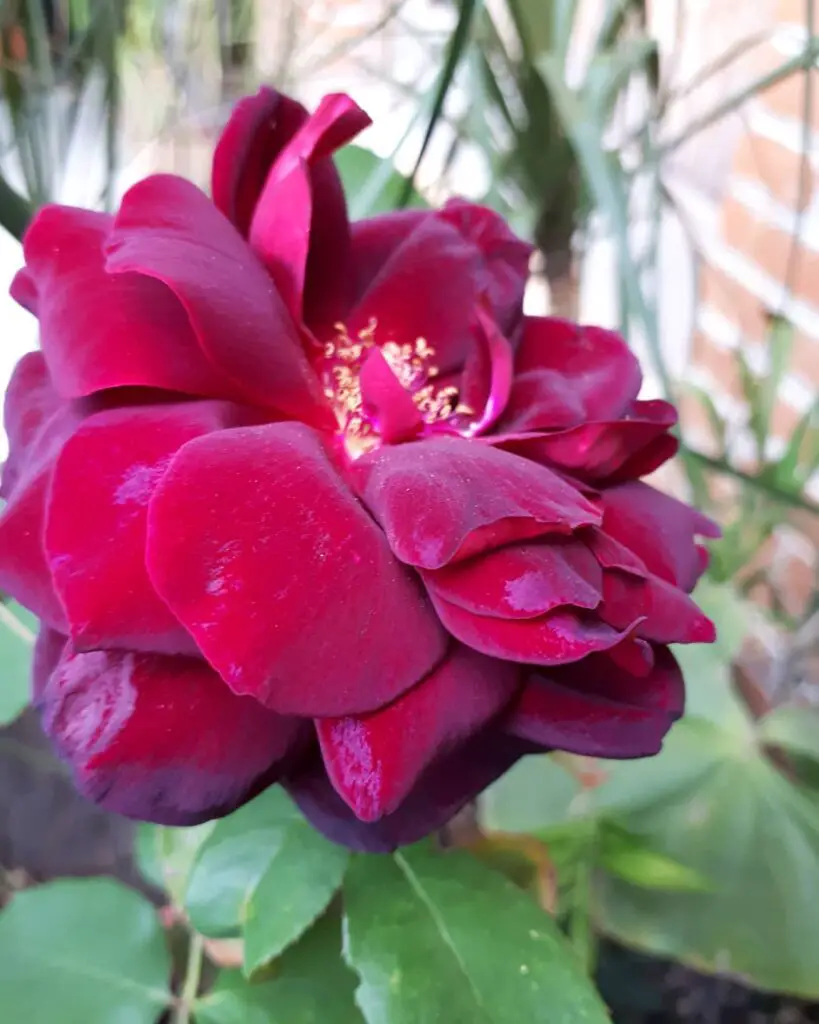Rose Spot Anthracnose: Unveiling Nature’s Delicate Balance
In the intricate tapestry of botanical beauty, roses stand as timeless symbols of elegance and grace. Yet, amidst their allure lies a persistent threat known as Rose Spot Anthracnose. This fungal disease, caused by the pathogen Diplocarpon rosae, delicately weaves its way into the leaves of our beloved roses, leaving behind distinctive purple-red spots. As gardeners, we cherish these blooms not only for their aesthetic appeal but also for the intricate ecological dance they perform with their environment.
Rose Spot Anthracnose serves as a poignant reminder of the delicate balance within nature’s ecosystem. Beyond its visual impact, this disease underscores the interplay between plant health and environmental conditions, challenging our understanding of cultivation practices and resilience in the face of botanical adversaries. Join us as we delve into the depths of this fungal intrigue, exploring both the scientific nuances and the practical implications for gardeners dedicated to preserving the beauty and vitality of their rose gardens.
Combatting Rose Spot Anthracnose
We’ll discuss the topic step by step. So, bear with us, and let’s dive into it:

Understanding Rose Spot Anthracnose
Rose Spot Anthracnose, caused by the fungus Diplocarpon rosae, is a common affliction of rose plants worldwide. This fungal disease manifests as circular, purple-red spots on rose leaves, often surrounded by yellow halos. These lesions weaken the plant by disrupting photosynthesis and reducing vigor.
Favored by cool, moist conditions, the fungus spreads through splashing water and thrives in crowded, poorly ventilated gardens. Regular monitoring and proper sanitation practices, such as removing infected leaves and improving air circulation, are crucial for management. Fungicides may also be used preventively to protect susceptible rose cultivars from severe outbreaks.
Detecting Rose Spot Anthracnose
Detecting Rose Spot Anthracnose early is crucial for effective management and preservation of rose health. Look for small purple-red spots with defined edges on upper leaf surfaces, often surrounded by yellow halos. These lesions expand with time, causing leaves to yellow and drop prematurely. Optimal conditions for disease development include temperatures between 15-25°C and prolonged leaf wetness periods, typical in humid climates or after rain.
Regular inspection of roses, particularly during wet seasons, allows for early detection. Prompt removal and destruction of infected leaves, coupled with fungicidal treatments as advised, help mitigate further spread and maintain garden aesthetics.
Causes & Factors of Rose Spot Anthracnose
Rose Spot Anthracnose, primarily caused by the fungal pathogen Diplocarpon rosae, thrives under specific environmental conditions and can severely impact rose cultivation. Several key factors contribute to its prevalence:
- Favorable Environmental Conditions:
- Humidity: High humidity levels, typically above 85%, create ideal conditions for fungal growth.
- Temperature: Temperatures ranging from 15°C to 25°C (59°F to 77°F) promote spore germination and disease spread.
- Host Susceptibility:
- Certain rose cultivars are more susceptible to Diplocarpon rosae than others.
- Weakened or stressed plants due to inadequate nutrition or pruning practices are more vulnerable.
- Pathogen Survival and Spread:
- The pathogen overwinters on infected leaves, stems, and debris, ready to infect new growth in the spring.
- Rain or overhead irrigation facilitates spore dissemination, perpetuating the disease cycle.
Understanding these factors is crucial for implementing effective disease management strategies and maintaining healthy rose plants.

How to Defend Against Rose Spot Anthracnose Fungus?
Rose Spot Anthracnose, caused by the fungus Diplocarpon rosae, poses a significant challenge to rose enthusiasts worldwide. Effective defense strategies are crucial to maintaining the health and beauty of your roses.
1. Cultural Practices
Implementing proper cultural practices is fundamental in preventing and managing Rose Spot Anthracnose:
- Pruning: Regularly prune roses to improve air circulation and reduce moisture around the plants, which inhibits fungal growth.
- Sanitation: Remove and destroy infected leaves and debris promptly to prevent the spread of spores.
- Watering: Water the base of plants early in the day to allow foliage to dry thoroughly, minimizing favorable conditions for fungal development.
- Spacing: Plant roses with adequate spacing to promote airflow, reducing humidity around the leaves.
2. Chemical Control
In severe cases, chemical treatments may be necessary:
- Fungicides: Apply fungicides preventatively or at the first sign of infection. Products containing active ingredients like chlorothalonil or mancozeb are effective against Diplocarpon rosae.
- Application Timing: Follow manufacturer instructions for application frequency and timing to maximize effectiveness while minimizing environmental impact.
- Rotation: Rotate fungicide classes to prevent resistance development in fungal populations.
3. Resistant Varieties
Selecting resistant rose varieties can greatly reduce the risk of Rose Spot Anthracnose:
- Research: Choose cultivars known for their resistance to fungal diseases, including Diplocarpon rosae.
- Consultation: Seek advice from local nurseries or extension services to identify suitable varieties for your region.
- Monitoring: Regularly inspect plants for early signs of disease, even when using resistant varieties, to promptly implement control measures if needed.
By combining these strategies, gardeners can effectively defend against Rose Spot Anthracnose and ensure their roses remain healthy and vibrant throughout the growing season. Remember, proactive management and attention to detail are key to preserving the beauty of your rose garden.
Extra Tips to Counter Rose Spot Anthracnose
Rose Spot Anthracnose poses a significant challenge to rose enthusiasts, but with proactive measures, its impact can be minimized. Here are essential strategies to safeguard your roses:
1. Optimal Watering Practices
- Avoid Overhead Watering: Minimize leaf wetness by watering at the base of plants.
- Morning Watering: Water early in the day to allow foliage to dry before evening, reducing fungal growth.
2. Prudent Planting and Pruning
- Air Circulation: Plant roses in well-spaced rows to improve air circulation.
- Prune Wisely: Remove and dispose of infected leaves promptly to prevent spreading.
3. Fungal Control Treatments
- Fungicides: Apply fungicides preventatively or at the first signs of infection.
- Organic Options: Consider organic fungicides containing sulfur or neem oil.
4. Soil Health Management
- Mulching: Use organic mulch to maintain soil moisture and temperature, promoting healthy root systems.
- Balanced Fertilization: Avoid excessive nitrogen, which can promote succulent growth susceptible to disease.
Implementing these strategies not only helps in controlling Rose Spot Anthracnose but also enhances overall rose health, ensuring vibrant blooms throughout the season.

Frequently Asked Questions
What are the symptoms of Rose Spot Anthracnose?
Rose Spot Anthracnose manifests as purple-red spots on rose leaves, often surrounded by yellow halos. Infected leaves may turn yellow and drop prematurely, weakening the plant over time.
How does Rose Spot Anthracnose affect rose plants?
The disease primarily attacks the leaves of roses, weakening them and reducing the plant’s ability to photosynthesize. Severe infections can lead to defoliation, stunting growth, and diminishing flower production.
What environmental conditions favor the development of Rose Spot Anthracnose?
Warm and humid conditions, especially during spring and early summer, provide an ideal environment for the fungal spores to thrive. Poor air circulation and prolonged leaf wetness also contribute to its spread.
How can gardeners prevent and manage Rose Spot Anthracnose?
Regular pruning to improve air circulation, avoiding overhead watering, and maintaining clean garden beds by removing fallen leaves are essential preventive measures. Fungicidal sprays can be used preventively or at the first signs of infection to manage the disease effectively.
Conclusion
In the delicate world of rose cultivation, Rose Spot Anthracnose poses a significant challenge, threatening the health and beauty of these beloved flowers. As stewards of our gardens, understanding the symptoms, effects, and preventive measures against this fungal disease is crucial.
By practicing diligent garden management, including proper sanitation and timely fungicidal treatments, we can mitigate its impact and ensure that our roses flourish vibrantly. Let our dedication to preserving these floral wonders be a testament to our commitment to maintaining the delicate balance between nature’s beauty and its challenges.

I’m Shofi, a passionate gardener and blogger. I have 10+ years of experience in gardening and hold certifications in horticulture and garden design. I share my knowledge and skills through my garden blog to inspire and educate others on the joys of gardening. I try to provide valuable information and create a community for gardeners of all levels to connect and learn. My ultimate goal is to inspire others to start their own gardens and connect with nature.

